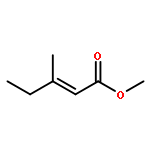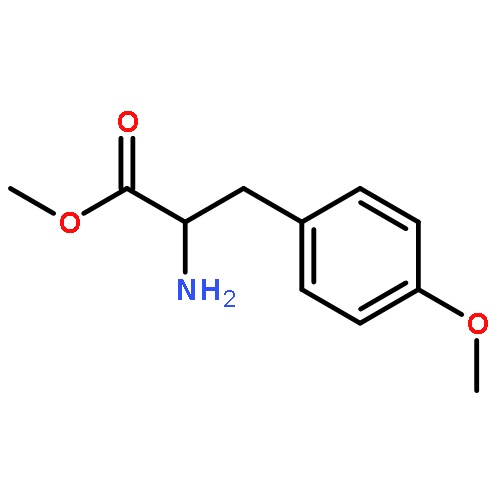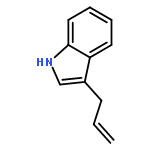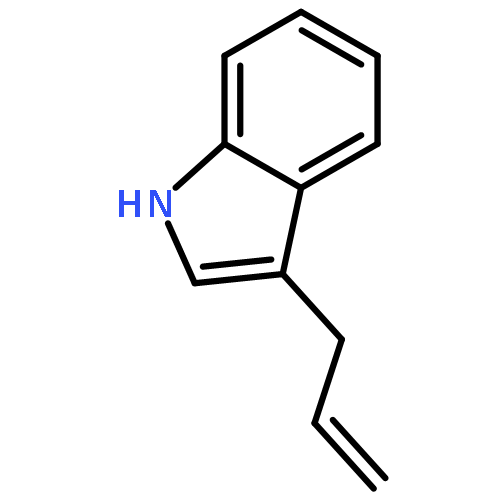Co-reporter:Hoang V. Le, Bruce Ganem
Tetrahedron Letters 2014 Volume 55(Issue 12) pp:2003-2005
Publication Date(Web):19 March 2014
DOI:10.1016/j.tetlet.2014.02.016
A convenient and efficient (one-step) oxidation is reported of commercially available tosylmethylisocyanide (TOSMIC) to form tosylmethylisocyanate, making this highly reactive bifunctional molecule a readily available synthetic reagent. Besides engaging in nucleophilic addition reactions with alcohols, amines, and thiols, tosylmethylisocyanate also reacts with carboxylic acids to form tosylmethylamides, which undergo substitution reactions in the presence of organocopper and organomagnesium reagents.
Co-reporter:Claire M. Gober, Hoang V. Le, Bruce Ganem
Tetrahedron Letters 2012 Volume 53(Issue 34) pp:4536-4537
Publication Date(Web):22 August 2012
DOI:10.1016/j.tetlet.2012.06.046
The reaction of aliphatic and aromatic isonitriles with sulfuryl chloride provides an efficient, general route to the corresponding dichlorides without byproducts of free-radical substitution.
Co-reporter:Hoang V. Le, Lijun Fan, Bruce Ganem
Tetrahedron Letters 2011 Volume 52(Issue 17) pp:2209-2211
Publication Date(Web):27 April 2011
DOI:10.1016/j.tetlet.2010.11.156
N-tert-Butylamides are readily converted into the corresponding carboxylic acids by simple nitrosation. The process, which occurs under mild nonaqueous conditions, leaves carboxylic esters untouched and transforms multicomponent reaction products into useful building blocks for further synthetic elaboration.
Co-reporter:Gabriella Sanguineti, Hoang V. Le, Bruce Ganem
Tetrahedron 2011 67(52) pp: 10208-10211
Publication Date(Web):
DOI:10.1016/j.tet.2011.09.147
Co-reporter:Bruce Ganem
Accounts of Chemical Research 2009 Volume 42(Issue 3) pp:463
Publication Date(Web):January 28, 2009
DOI:10.1021/ar800214s
By generating structural complexity in a single step from three or more reactants, multicomponent reactions (MCRs) make it possible to synthesize target compounds with greater efficiency and atom economy. The history of such reactions can be traced to the mid-19th century when Strecker first produced α-aminonitriles from the condensation of aldehydes with ammonia and hydrogen cyanide. Recently, academic chemists have renewed their interest in MCRs. In part, the pharmaceutical industry has fueled this resurgence because of the growing need to assemble libraries of structurally complex substances for evaluation as lead compounds in drug discovery and development programs. The application of MCRs to that increasingly important objective remains limited by the relatively small number of such reactions that can be broadly applied to prepare biologically relevant or natural-product-like molecular frameworks. We were interested in applying logic-based approaches, such as our single reactant replacement (SRR) approach, as a way both to improve known MCRs and to design new multiple-component routes to bioactive structures. This Account provides several examples that illustrate the use of SRR with known MCRs as starting points for synthetic innovation in this area. As part of our working hypothesis, we initially explored strategies for engineering improvements into known MCRs, either by increasing the dimensionality—that is, changing an n-component to an (n + 1)-component reaction—or broadening the scope of useful input structures, or both. By exhaustively applying retrosynthetic analysis to the cognate MCR to identify and exploit alternative entry points into the overall reaction manifold, we have devised several such re-engineered MCRs. Serendipitous findings have also augmented the yield of useful developments from our logic-inspired approach. In some cases, we have identified surprising links between different compound families that provide useful new entry points for chemical library synthesis. In other cases, the same re-engineering logic made it possible (sometimes in unexpected ways) to transform certain nonelementary two-component reactions into higher order MCRs. While logic may also inspire the search for new MCRs, the design process requires added chemical creativity, which cannot be reduced to a simple formula. The long-term goal of our research is to expand the useful repertoire of such reactions, which are important as complexity-generating tools in both combinatorial and diversity-oriented synthesis.
Co-reporter:Lijun Fan, Ryan W. Lewis, George P. Hess, Bruce Ganem
Bioorganic & Medicinal Chemistry Letters 2009 Volume 19(Issue 14) pp:3932-3933
Publication Date(Web):15 July 2009
DOI:10.1016/j.bmcl.2009.03.065
A short and convergent synthetic approach to new photoactivatable precursors of γ-aminobutyric acid (GABA) is described. When photolyzed, the ‘caged’ GABA precursor efficiently releases GABA, as judged by depolarization measurements on the mammalian GABAA receptor.
Co-reporter:Sheng Zhang, David B Wilson, Bruce Ganem
Bioorganic & Medicinal Chemistry 2003 Volume 11(Issue 14) pp:3109-3114
Publication Date(Web):17 July 2003
DOI:10.1016/S0968-0896(03)00242-6
Besides playing a central role in phenylalanine biosynthesis, the bifunctional P-protein in Eschericia coli provides a unique model system for investigating whether allosteric effects can be engineered into protein catalysts using modular regulatory elements. Previous studies have established that the P-protein contains three distinct domains whose functions are preserved, even when separated: chorismate mutase (residues 1–109), prephenate dehydratase (residues 101–285), and an allosteric domain (residues 286–386) for feedback inhibition by phenylalanine. By deleting the prephenate dehydrase domain, a functional chorismate mutase linked directly to the phenylalanine binding domain has been engineered and overexpressed. This manuscript reports the catalytic properties of the mutase in the absence and presence of phenylalanine.Graphic
Co-reporter:Bruce Ganem, Jack D Henion
Bioorganic & Medicinal Chemistry 2003 Volume 11(Issue 3) pp:311-314
Publication Date(Web):6 February 2003
DOI:10.1016/S0968-0896(02)00537-0
Graphic
Co-reporter:Ryan C. Schoenfeld, Susan Conova, Daniel Rittschof, Bruce Ganem
Bioorganic & Medicinal Chemistry Letters 2002 Volume 12(Issue 5) pp:823-825
Publication Date(Web):11 March 2002
DOI:10.1016/S0960-894X(02)00022-7
Synthesis and biological evaluation of two naturally-occurring bromotyramines, moloka'iamine 1 and 3,5-dibromo-4-methoxy-β-phenethylamine 2, together with several analogues, have been completed. Bromotyramine 2 is cytotoxic, and was found to be a potent antifoulant. Analogues 15 and 16 also displayed significant cytotoxic and antifouling activities.Graphic
Co-reporter:Arifa Husain, Shuqing Chen, David B. Wilson, Bruce Ganem
Bioorganic & Medicinal Chemistry Letters 2001 Volume 11(Issue 18) pp:2485-2488
Publication Date(Web):17 September 2001
DOI:10.1016/S0960-894X(01)00485-1
To identify selective prephenate dehydratase (PDT) inhibitors, a series of substituted biphenic acid derivatives was synthesized using the Ullmann reaction. Screening experiments identified 18 as a promising new PDT inhibitor.The dinitrobiphenic acid shown was identified as a new inhibitor of prephenate dehydratase.
Co-reporter:Ryan C. Schoenfeld, Jean-Philip Lumb, Jacques Fantini, Bruce Ganem
Bioorganic & Medicinal Chemistry Letters 2000 Volume 10(Issue 23) pp:2679-2681
Publication Date(Web):4 December 2000
DOI:10.1016/S0960-894X(00)00543-6
A new family of bioactive bromotyrosine derivatives, termed mololipids, was recently isolated from a Hawaiian sponge, but could not be resolved into individual components by chromatography. To complete their structural characterization and better understand structure–activity relationships, the first pure samples of dimyristoyl, distearoyl, dioleoyl, and stearoyl/oleoyl mololipids have now been prepared by total synthesis, and their anti-HIV activity investigated.
Co-reporter:Kevin T. Weber, Djilali Hammache, Jacques Fantini, Bruce Ganem
Bioorganic & Medicinal Chemistry Letters 2000 Volume 10(Issue 10) pp:1011-1014
Publication Date(Web):15 May 2000
DOI:10.1016/S0960-894X(00)00153-0
HIV-1 has been shown to infect CD4 negative cells by the binding of HIV gp120 to the glycolipid galactosylceramide (1) (GalCer). Several analogues of 1 were prepared to investigate the specific orientation of 1 in the membrane bilayer that is involved in gp120 binding. Interestingly, N-stearyl-1-deoxynojirimycin ( and ) displayed potent and specific affinity for gp120 equal to that of 1, a finding that may shed light on the antiviral activity of N-butyl-1-deoxynojirimycin.
Co-reporter: Bruce Ganem
Angewandte Chemie 1996 Volume 108(Issue 9) pp:
Publication Date(Web):31 JAN 2006
DOI:10.1002/ange.19961080904
“Déjà-vu all over again”. So beschrieb der berühmte Baseballspieler Yogi Berra kurz und knapp die Erfahrung, etwas zu lernen, das andere lange vorher begriffen haben. Der Mechanismus, nach dem das Enzym Chorismat-Mutase die Claisen-Umlagerung von Chorisminsäure beschleunigt, hat Chemiker und Biochemiker viele Jahre verblüfft und gefesselt. Klassische Lösungsmittel- und Katalysatoreffekte, die jedoch von der chemischen Fachwelt zum größten Teil ignoriert wurden, lieferten nicht nur wichtige Anhaltspunkte hinsichtlich des Mechanismus der enzymkatalysierten Reaktion, sondern stellten die Claisen-Umlagerung in ein neues Licht. Früher schien Chorisminsäure eine Ausnahme zu sein, da sie sich so schnell unter physiologischen Bedingungen umlagerte. Inzwischen ist klar, daß sich sogar Allylvinylether bei Raumtemperatur in wäßriger Lösung umlagert. Die Fähigkeit des Enzyms, die Umlagerung von Chorismat-Ionen um den Faktor 106 zu beschleunigen, wurde damals als außergewöhnlich angesehen. Die Katalyse mit trivalenten Aluminiumverbindungen erreicht jedoch ebenfalls diese Geschwindigkeitserhöhungen und übertrifft sie in einigen Fällen sogar. Es sollte deshalb wirklich nicht überraschen, daß es in der Natur mehrere strukturell verschiedene Lösungen zum Aufbau von Enzymkatalysatoren für die Umlagerung von Chorisminsäure gibt.













![Bicyclo[2.2.1]hept-2-ene-2,3-dicarboxylicacid](http://img.cochemist.com/ccimg/16600/16508-04-6.png)
![Bicyclo[2.2.1]hept-2-ene-2,3-dicarboxylicacid](http://img.cochemist.com/ccimg/16600/16508-04-6_b.png)





